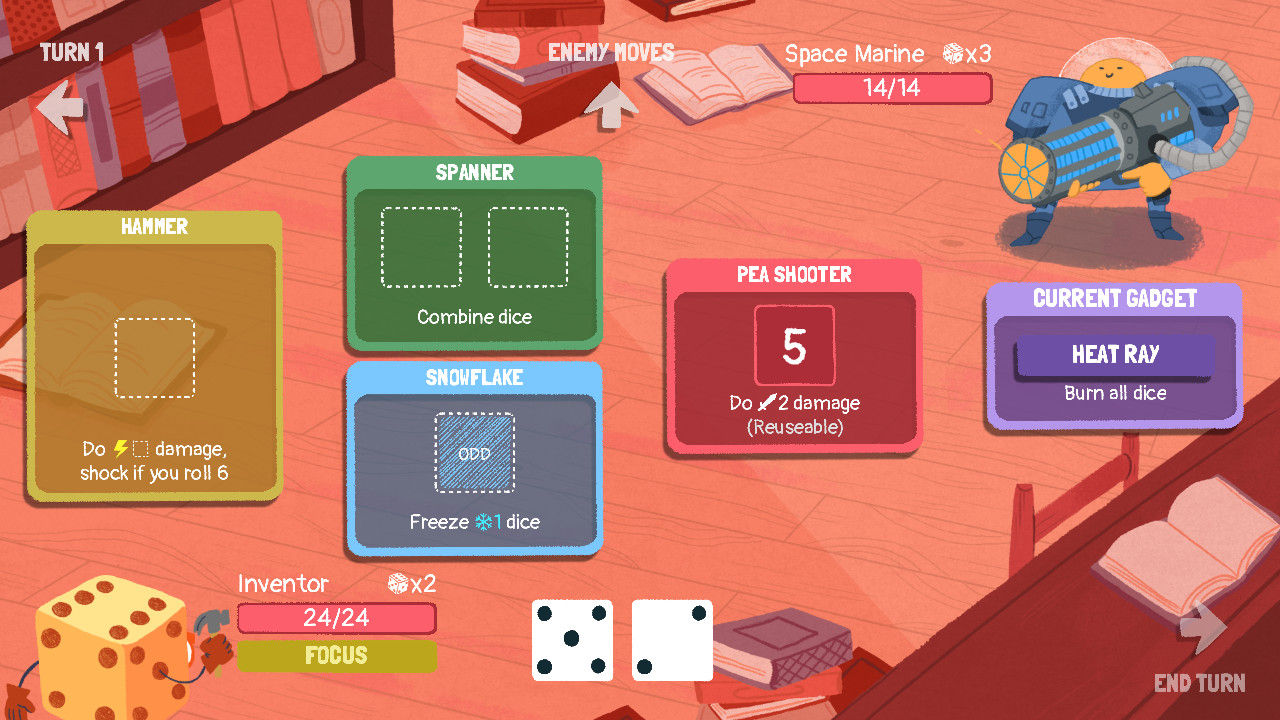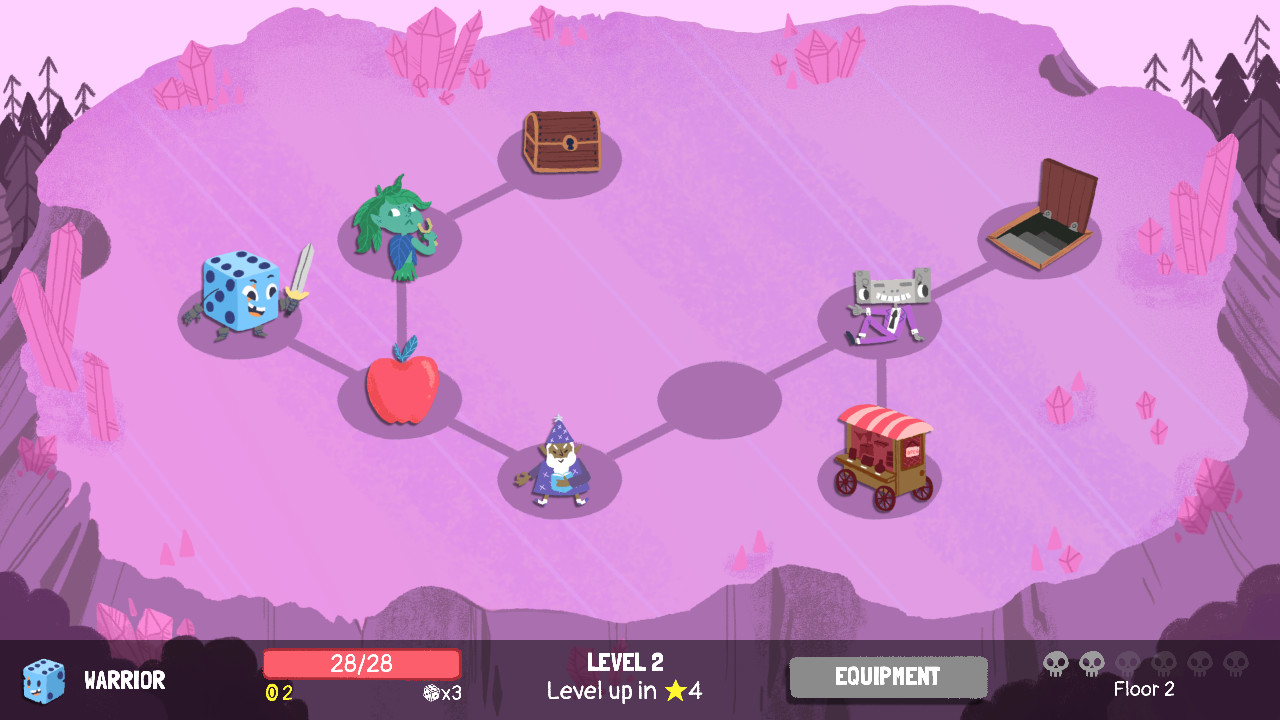‘Dicey Dungeons’ Will Help You Understand the Best New Genre in Games
Credit to Author: Austin Walker| Date: Tue, 13 Aug 2019 18:52:09 +0000
In the world of video games, it’s hard to miss the arrival and ascent of a new hit genre. From mid-2017’s breakout hit PUBG, through the rise of Fortnite later that year, and to the debut of the greatly refined Apex Legends this past February, the battle royale dominated the discourse. This year, autochess followed suit: It started as a Dota 2 mod that ditched direct character control for a focus on automation, planning, and team composition before becoming the basis for a half dozen competing games (and becoming the de facto big new thing of 2019 in the process). But my favorite “new thing” is something else entirely: the roguelike deckbuilder.
That’s a problem, because while I love them, I know that seeing the phrase “roguelike deckbuilder” absolutely caused some non-insignificant percentage of readers to close this tab. (If you’re still reading, thank you.) For the uninitiated: These games (like Slay the Spire, Nowhere Prophet, Griftlands, and the influential, but underappreciated Dream Quest) start you out with a very basic deck of Magic the Gathering style cards, toss you headfirst into some sort of unexplored map where you face off against a bunch of enemies (sometimes with their own decks), and reward you with new cards when you win. As you decide which of those cards to add to your deck, you slowly build out a character in an RPG-like fashion.
While the fans of this genre have done our best to sing the praises of these games, the roguelike deckbuilder somehow hasn’t blown up to become the next autochess. And you know what, I get it. These games are intimidating to newcomers. In each of the above games, you have to learn the ins-and-outs of unique combat systems, build a well balanced, Magic the Gathering-like deck of cards every time you play, and then execute on your deck’s (hopefully coherent) strategy. Sure, these games might have cool character designs, but if you don’t have a lot of experience managing mana and putting together card combos, I understand why they might be overwhelming.
Well, finally, we have an ally in our struggle to evangelize the good word. Finally, designer Terry Cavanaugh ( VVVVVV, Superhexagon), artist Marlowe Dobbe, and composer Chipzel, have given us Dicey Dungeons, a roguelike deckbuilder that looks nothing like the phrase “roguelike deckbuilder.” Take a look for yourself:
It’s bright, it’s colorful, it’s stylish, it’s inviting, and it doesn’t have anything you would point to and describe as a “card.” And yet, Dicey Dungeons is also filled with the satisfying, mechanical interactions that make me love deckbuilders. Most importantly, it isn’t just hiding an excess complexity behind a twee aesthetic. Its playful character designs and head-bopping, earworm-filled music go hand in hand with the game design to help turn the genre into something more approachable.
The game has an excellent tutorial that introduces its concepts slowly, and its unlockable classes naturally progress in complexity, so if everything I’ve said above sounds good to you, then trust me and dive in. But if you want to know more about how all this works, well, here are the basics: At the start of each run, you—an anthropomorphic die (don’t ask) with a classic dungeon delving class like warrior, thief, or robot—enter a deadly game show hosted by Lady Luck. As you explore her dungeon, you’ll face off in one-on-one, turn-based fights against a host of flavorful enemies (like exceptionally loud birds, sapient VHS players, and space marines). Each round, you roll a couple of regular, six-sided dice (gaining more as you progress in level) and assign them to your equipment to cause a range of effects.
Some of these are simple: Put a die in your sword, and you’ll do that much damage to your enemy. Others are more complex: A magic staff requires a total of “8” points to be used (meaning you’ll need to put multiple dice into it), and it will do 6 damage and burn one of your opponent’s dice, which means that it will do an additional 2 damage if they try to use it on their next turn. It’s how these abilities combine that lead to the fun decision making that drives Dicey Dungeons. Here, take a look at this screen from the game’s Steam page, which shows off the Engineer class’ starter kit:

So, you’ve rolled a 5 and a 2. What can you do with that? Well, the Pea Shooter requires 5 points to do a measly 2 damage, so that’s right out. You could put the 5 into the Hammer to do a solid 5 damage, and put the 2 into the Pea Shooter, dropping it’s required number to 3 so that it’s a little more affordable next round. Or, you could use the Spanner to combine the 5 and the 2, which (since these dice max out at 6) would become a 6 and a 1. Then you could play the 6 in the Hammer, giving your enemy 6 electric damage and shocking them, which makes one of their own pieces of equipment harder to use, and you could put the 1 into the Pea Shooter or the Snowflake, which freezes an enemy’s die, dropping it to 1. Oh, and don’t forget to hit the Heat Ray button, which sets all of their dice on fire, too. A perfect turn.
Except… most turns, you won’t have rolled the exact set of dice you’d need to optimize, and so you’re left making hard choices about what strategy you want to take. And because you’re playing as the Engineer, you have to contest with a unique pressure: That special heat ray gadget of yours? Well, that’s gonna disappear at the end of the battle, and you’ll need to sacrifice one of your other pieces of equipment to be turned into another (very powerful) gadget that, itself, will last only for one battle.
Fortunately, you gain new gear from leveling, chests, and shops pretty regularly, which augments the loadout you begin with. Each class starts with a set of distinct gear and some pretty unique abilities, but even the basic warrior is a lot of fun to play with as you delve through the dungeon.

And despite the lack of an obvious “deck,” and less long-term complexity overall, I’m keen to agree with the developers in calling this a deckbuilder. Run after run, you’ll be making the same sorts of decisions about probability, reliability, and priority that you would in Slay the Spire or Griftlands. (That’s doubly true for the more complex characters, like the Witch (who builds a spellbook, with each spell tied to a die result) or the Jester (whose equipment is literally dealt round after round from a deck). And like Dream Quest, deciding which encounters to take in which order can really change the outcomes of a run.
Even Dicey Dungeon’s idea of metagame progression is distinct from its peers. Yes, like Slay the Spire, each time you complete game with one of the classes, you unlock another (until you’ve unlocked all six), but most other similar deckbuilders also reward you by adding new cards into the big pool of stuff that will show up in your future plays, something I’ve seen new players of the genre get confused by. Instead, Dicey Dungeon’s walks you through a progression of increasing complex classes and through a set of “episodes” that switch things up for the player, offering a modified set of abilities or even fundamentally changing core rules of the game.
Add on top of that challenge and remix modes, both of which further shake up the formula, and it’s clear there’s more in this dungeon than there seems to be on first blush. While Dicey Dungeons isn’t my favorite in the genre, its approachability and aesthetic makes it stand out in the crowd. It’s the perfect ambassador for a genre I’ve been trying to get everyone I know to play. I only wish I could play it on my phone.
Have thoughts? Swing by the Waypoint forums to share them!
This article originally appeared on VICE US.